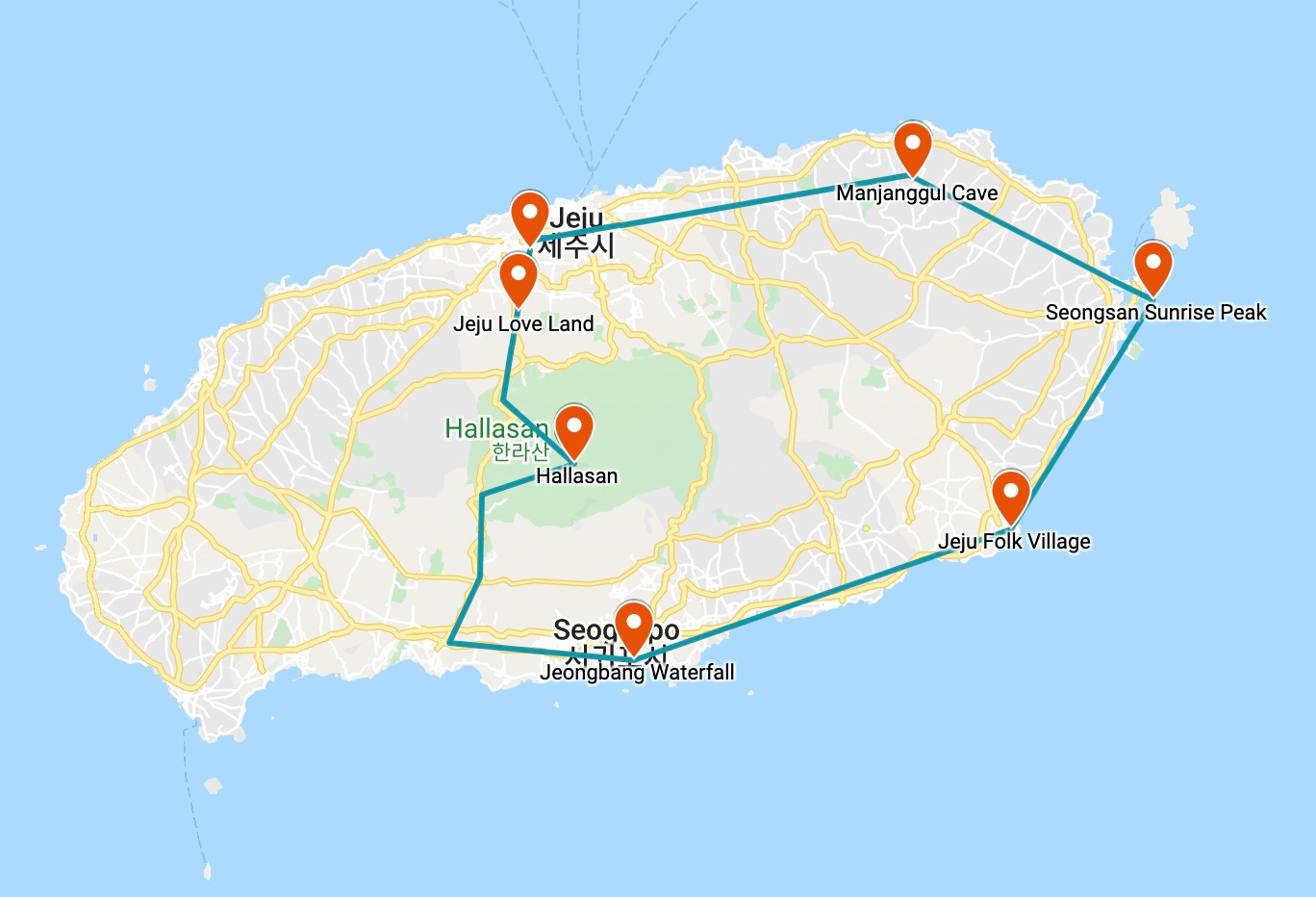Eating wonderful fish on Jeju Island - Vol 25
Vol 25 - This week I try lovely Spanish Mackerel & Hairtail fish on Jeju Island, South Korea.
안녕하세요, Kia Orana, Welcome
This week I continue my adventures on Jeju island, South Korea, and try tasty Spanish Mackerel & Hairtail fish. Situated just over 1 hour flight time or about 450Km from Seoul, Jeju island is very different from mainland South Korea. If you go at the right time, it’s almost tropical weather with various fruits, including Mangos, Bananas, and the famous Jeju Mandarins. There is an expression that Jeju island is famous for 3 things. These are wind, rocks, and women. It’s definitely windy, built on volcanic rocks, and the island is famous for the strength and ability of its women divers that go to great depths to grab seafood all while free diving. The haenyeo or female divers some of these women are in their 80s and dive to about 10m to 30m to collect shellfish.
Map of South Korea - Image courtesy of InsideEVs.
The haenyeo or female divers of Jeju island.
The haenyeo or female divers of Jeju island. - Image courtesy of Culture trip.
Lovely Jeju beach - Image courtesy of Coconuts & Kimchi.
Segowipo Maeil Olle Market
On my journey around Jeju island, I find myself in Seogwipo, Jeju. Located on the southern side of the island, it is the second-largest city on Jeju and a major attraction site for its rugged coastline, parks, and even waterfalls.
There is a famous market in Seogwipo named Segowipo Maeil Olle Market. Although it’s not as big as other markets you will find in South Korea it’s just as vibrant with all kinds of products, seafood, and tourist items available.
Segowipo Maeil Olle Market - Images courtesy of Coconuts & Kimchi.
You can get to this city from Jeju city by car or bus and it takes anywhere from 30 mins to an hour depending on traffic.
After walking around this market on a cold windy day, I decided to have fish for lunch.
On walking in I actually had no idea what kind of fish was served here but after research discovered it was a Hairtail and Spanish Mackerel restaurant. From my recollection, I have never eaten Hairtail fish before but it’s like the picture above, long and more of a sporting fish but apparently can be eaten. Spanish Mackerel is larger, bony, and really hard to stop eating once you start. The pricing seems quite high at about NZ$85 for 2 people but then I noticed the extensive and never-ending dishes that kept coming out as is usual in Korean dining places. Also, the giant spicy soup goes down really well on a cold day.
Above is the Hairtail which was quite tasty but had lots of little bones. It really complemented the side dishes of vegetables and soups that seem never ending.
Above is the Spanish mackerel which was oily as expected but really hard to stop eating. One of those dishes you just want to eat more.
Overall, it was a great experience but one thing that you must have with these dishes is the local rice wine or ‘Soju”. This clear and colorless drink is a total wrecking ball. I have yet to see anyone defeat this drink. I have many tales to tell in regards to its destruction of friends and family but that needs to be a newsletter series on its own.
Each region in South Korea seems to have a local Soju brand and the Halla mountain Soju is the local drop from Jeju Island. Named after the highest mountain in South Korea at 1950m you can visit this mountain while on Jeju island and take a lovely walk. There are 2 choices for Halla Soju. The 17% version tastes a little like gasoline and the 22% version was surprisingly a lot better and goes with any Korean food even this fish menu. It’s definitely worth a try. Keep your eye out for the clear bottle with the mountain and 21.
I have to say it was well worth the time and effort trying this restaurant along with the hot stew served you can’t go wrong. Cool market and great food. Jeju has many activities and delicious foods to try.
I will explain more in future newsletters.
“Feed your focus, starve your distractions.”













